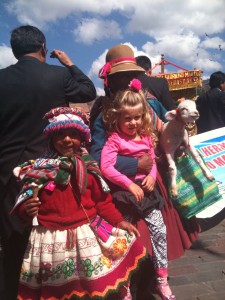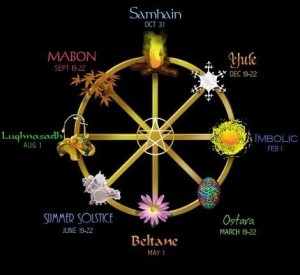What Do You Talk About In Your Family During The Holiday?
Now that the Christmas holiday is nearing, our family has started our discussion on the meaning of Christmas, Different Cultures, Beliefs and Religions.
As our family has travelled the world we have experienced not only our own American holidays, like Thanksgiving but world holidays like:
 * Hari Raya Nyepi in Indonesia
* Hari Raya Nyepi in Indonesia
* The Day of The Dead in Mexico
* Inti Raymi in Cusco Peru
* All Souls Day in Brazil
* Independencia de la Villa de los Santos in Panama
* Fiji Day and Diwali in Fiji
and of course all religious holiday’s in between.
A common thread we discuss is that all religions have a beautiful messages and meanings to the people that celebrate them, and although the stories and the beliefs may be different, they all have an underlining message of love, hope, and faith.
We talk about all the stories from each religion and country so that Hanalei can understand that although people may look different, or believe in different things, we are all children of one God. Our family is grateful to be taken in by each family and culture to allow us the honor of celebrating a part of their heritage and respect their for their beliefs.
Celebration of World Religions And Holiday’s
At Hanalei’sschool, Callao Learning Centre – British School in Tenerife the children will be singing and sharing the Christmas Holiday with families from all over the world.
England, Lithuania, India, Italy, Grmany, Spain, Hungary, Russia and probably several more.
Their common bond is they are Children of this world, of God, of Mother Nature, of Spirit or whatever name you want to give. 
We will be celebrating Thanksgiving tomorrow and Christmas next month while honoring all religions of the world this holiday and giving gratitude that we have the FREEDOM to do so.
In my search, I found some fun and interesting interpretations of the holiday’s that are upon us, use as you will.
Christmas, Pagan Perspective, Yule & Tree’s Facts
No one knows what day Jesus Christ was born on. From the biblical description, most historians believe that his birth probably occurred in September, approximately six months after Passover. One thing they agree on is that it is very unlikely that Jesus was born in December, since the bible records shepherds tending their sheep in the fields on that night. This is quite unlikely to have happened during a cold Judean winter. So why do we celebrate Christ’s birthday as Christmas, on December the 25th?
The answer lies in the pagan origins of Christmas. In ancient Babylon, the feast of the Son of Isis (Goddess of Nature) was celebrated on December 25. Raucous partying, gluttonous eating and drinking, and gift-giving were traditions of this feast.

In northern Europe, many other traditions that we now consider part of Christian worship were begun long before the participants had ever heard of Christ. The pagans of northern Europe celebrated the their own winter solstice, known as Yule. Yule was symbolic of the pagan Sun God, Mithras, being born, and was observed on the shortest day of the year. As the Sun God grew and matured, the days became longer and warmer. It was customary to light a candle to encourage Mithras, and the sun, to reappear next year.
Huge Yule logs were burned in honor of the sun. The word Yule itself means “wheel,” the wheel being a pagan symbol for the sun. Mistletoe was considered a sacred plant, and the custom of kissing under the mistletoe began as a fertility ritual. Hollyberries were thought to be a food of the gods.
The tree is the one symbol that unites almost all the northern European winter solstices. Live evergreen trees were often brought into homes during the harsh winters as a reminder to inhabitants that soon their crops would grow again. Evergreen boughs were sometimes carried as totems of good luck and were often present at weddings, representing fertility. The Druids used the tree as a religious symbol, holding their sacred ceremonies while surrounding and worshipping huge trees.
In 350, Pope Julius I declared that Christ’s birth would be celebrated on December 25. There is little doubt that he was trying to make it as painless as possible for pagan Romans (who remained a majority at that time) to convert to Christianity. The new religion went down a bit easier, knowing that their feasts would not be taken away from them.
Christmas (Christ-Mass) as we know it today, most historians agree, began in Germany, though Catholics and Lutherans still disagree about which church celebrated it first. The earliest record of an evergreen being decorated in a Christian celebration was in 1521 in the Alsace region of Germany. A prominent Lutheran minister of the day cried blasphemy: “Better that they should look to the true tree of life, Christ.”
The controversy continues even today in some fundamentalist sects, I merely share for insight and for encouragement to parents to share more than what your family believes at home, but to appreciate others as well.
Have an UNSTOPPABLE Day and Holiday Season!

RHonda Swan~ Unstoppable Mamma!